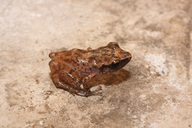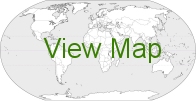
Assessment Results
Eleutherodactylus longipes
Order:
Anura
Family:
Eleutherodactylidae
Synonym(s):
Eleutherodactylus dennisi, Syrrhophus latodactylus, Batrachyla longipes, Hylodes longipes, Syrrhophus latodactylus
Assessed for:
Mexico
on:
28 Apr 2020
by:
AArk/ASG Assessment Workshop
IUCN Global Red List:
Least Concern (LC)
National Red List:
(not assessed)
Distribution:
Mexico
Evolutionary Distinctiveness score:
18.18809642
Recommended Conservation Actions:
Additional Comments:
| Question # | Short Name | Question Text | Response | Comments |
| 1 | Extinction risk | Current IUCN Red List category. [Data obtained from the IUCN Red List.] | Least Concern (LC) | Listed as Least Concern in view of its wide distribution and presumed large population. This species would not have qualified for Vulnerable if an EOO had been calculated for the last assessment, as the EOO was too large for the thresholds of this category. This reassessment uses guidance from the Red List Guidelines Version 11 (2014) and later versions, which encourage the use of a minimum convex polygon to estimate extent of occurrence (EOO) for criterion B assessments (i.e. without excluding areas forming discontinuities or disjunctions). Calculating the EOO according to these Guidelines has resulted in a downlisting from Vulnerable to Least Concern. |
| 2 | Possibly extinct | Is there a strong possibility that this species might be extinct in the wild? | No / unlikely | |
| 3 | Phylogenetic significance | The taxon’s Evolutionary Distinctiveness (ED) score, as generated by the ZSL EDGE program. (These data are not editable by Assessors). | ED value < 20 | |
| 4 | Protected habitat | Is a population of at least 50% of the individuals of the taxon included within a well-managed or reliably protected area or areas? | Unknown | This species occurs from central Nuevo León to western Tamaulipas, San Luis Potosí, northern Querétaro, and extreme north-western Hidalgo. The range of this species overlaps with the Reserva de la Biosfera Sierra Gorda and El Cielo Biosphere Reserve |
| 5 | Habitat for reintroduction, conservation translocation or supplementation | Does enough well-managed and reliably protected habitat exist, either within or outside of currently protected areas that is suitable for conservation translocation, including population restoration or conservation introduction? | Yes / probably | El Cielo Biosphere Reserve |
| 6 | Previous reintroductions | Have reintroduction or translocation attempts been made in the past for this species? | No | |
| 7 | In situ conservation activities | Are any in situ conservation actions currently in place for this species? (Only required if a Red List Assessment has not been completed, or if new actions have been implemented since the last Red List Assessment. (Information from the Conservation Actions section of the Red List assessment should be reviewed and considered when answering this question.). | Yes / probably | Comprehensive management at El Cielo Biosphere Reserve |
| 8 | In situ conservation activities | Are additional in situ conservation actions required to help conserve this species in the wild (e.g. habitat restoration and/or protection, control of invasive species, national legislation etc.)? | Yes / probably | There is a need for improved habitat protection at sites at which this species has been recorded in the Sierra Madre Oriental. Continuation of rigorous management of the existing parks is the best guarantee for the conservation of this species. |
| 9 | In situ research | Is additional in situ research required to better understand the species, e.g. distribution, population trends, natural history etc.? | Yes | Further research is needed in to population trends and distribution, life history, threats and actions. |
| 10 | Threat mitigation | Are the threats facing the taxon, including any new and emerging threats not considered in the IUCN Red List, potentially reversible? | Species does not require conservation action at this time | There are no major threats to the species, although there is some localised logging taking place within its range (C. Grünwald and I. Ahumada Carrillo pers. comm. October 2019). Should future rock mining take place in this species' range, it could be threatened by these activities (I. Ahumada Carrillo pers. comm. October 2019). |
| 11 | Over-collection from the wild | Is the taxon suffering from collection within its natural range, either for food, for the pet trade or for any other reason, which threatens the species’ continued persistence in the wild? | No / unlikely | |
| 12 | Population recovery | Is the known population of this species in the wild large enough to recover naturally, without ex situ intervention if threats are mitigated? | Yes / probably | This species is locally abundant (C. Grünwald and I. Ahumada Carrillo pers. comm. October 2019). |
| 13 | Action plans | Does an Action Plan for the species already exist, or is one currently being developed? | No | |
| 14 | Biological distinctiveness | Does the taxon exhibit a distinctive reproductive mode, behaviour, aspect of morphology or physiology, within the Order to which it belongs (e.g. Anura, Passeriformes etc.)? | No aspect of biology known to be exceptional | |
| 15 | Cultural/socio-economic importance | Does the taxon have a special human cultural value (e.g. as a national or regional symbol, in a historic context, featuring in traditional stories) or economic value (e.g. food, traditional medicine, tourism) within its natural range or in a wider global context? | No | |
| 16 | Scientific importance | Is the species vital to current or planned research other than species-specific ecology/biology/conservation within the Order to which it belongs (e.g. Anura, Passeriformes etc.) e.g. human medicine, climate change, environmental pollutants and conservation science? | No research dependent on this species | |
| 17 | Ex situ research | Does conserving this species (or closely related species) in situ depend upon research that can be most easily carried out ex situ? | No | |
| 18 | Ex situ conservation activities | Is any ex situ research or other ex situ conservation action currently in place for this species? (Information from the Conservation Actions section of the Red List assessment should be reviewed and considered when answering this question.) | No / unlikely | |
| 19 | Husbandry analog required | If an ex situ rescue program is recommended for this species, would an analog species be required to develop husbandry protocols first? | No / unlikely | |
| 20 | Husbandry analog | Do the biological and ecological attributes of this species make it suitable for developing husbandry regimes for more threatened related species? i.e. could this species be used in captivity to help to develop husbandry and breeding protocols which could be used for a similar, but more endangered species at a later stage? | No | |
| 21 | Captive breeding | Has this species been successfully bred and/or maintained in captivity? | Not held in captivity to date | |
| 22 | Conservation education/ecotourism potential | Is the species especially diurnal, active or colourful, or is there an interesting or unusual aspect of its ecology that make it particularly suitable to be an educational ambassador for conservation of the species in the range country, either in zoos or aquariums or within ecotourism activities? | No | |
| 23 | Mandate | Is there an existing conservation mandate recommending the ex situ conservation of this taxon? | No | |
| 24 | Range State approval | If an ex situ initiative was proposed for this species, would it be supported (and approved) by the range State (either within the range State or out-of-country ex situ)? | Yes / probably | |
| 25 | Founder specimens | Are sufficient animals of the taxon available or potentially available (from wild or captive sources) to initiate an ex situ program, if one was recommended? | Unknown | Research into availability of founders needs to be prioritised. |
| 26 | Taxonomic status | Has a complete taxonomic analysis of the species in the wild been carried out, to fully understand the functional unit you wish to conserve (i.e. have species limits been determined)? | Yes |
Citation:
AArk/ASG Assessment Workshop. 2020. Conservation Needs Assessment for Eleutherodactylus longipes, Mexico.
https://www.conservationneeds.org/assessment/718
Accessed 13 May 2024






